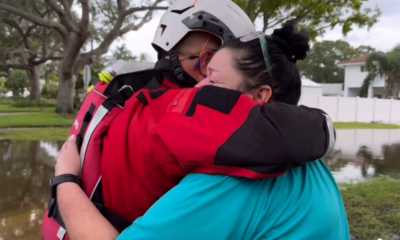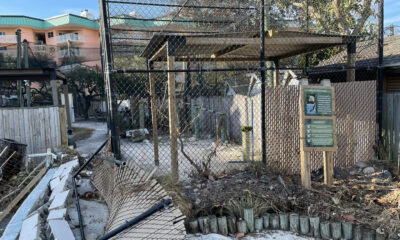Thrive
FWC approves new Skyway fishing restrictions

The Skyway Fishing Pier State Park annually attracts hundreds of thousands of anglers and seabirds alike, which has led to years of studies and debate surrounding how to prevent monofilament line entanglements.
After hearing from 52 public speakers Wednesday at the Hilton St. Petersburg Bayfront, the Florida Fish and Wildlife Commission (FWC) decided on a compromise. Starting Oct. 1, anglers can use just two fishing rods and must first complete an annual education program.
In addition, the FWC banned fishing lines with more than one hook, like sabiki and chicken rigs and topwater plugs, from Nov. 15 until March 15. State officials and local volunteers will monitor effectiveness and present an update and future recommendations in two years.
Over 200,000 people visit the Skyway Pier annually. FWC data shows that at least 3,300 seabirds, including many brown pelicans, required rescue from the facility over two years; about 500 died.
“This place is unique,” said commission Chair Rodney Barreto. “Believe me – there’s a lot of fishing opportunity in Florida. But there’s very limited opportunity for brown pelicans.”
Barreto, Vice Chair Steven Hudson and many public speakers wanted to ban sabiki rigs year-round during daylight hours. Those feature several hooks to create the illusion that a medium-sized fish is chasing a small school of prey.
That motion failed, and the commission settled on the new regulations in a 3-2 vote. Anglers often use sabiki rigs to catch bait fish sold to commercial captains, and one speaker said the restrictions would affect how people provide for their families.
Mike, who did not provide a last name, noted the pier is not a natural structure and that officials dedicated it to fishing. He also said visitors increasingly feed the birds, luring them to the area.
State officials established the Skyway Fishing Pier from the remains of the previous bridge spans in 1992. Pinellas and Manatee Counties each have a structure extending about a mile into the bay.
The pier is open year-round and is one of the state’s most visited for fishing. Anglers can catch fish typically found offshore, and the Sunshine Skyway Bridge provides a unique backdrop.

Stakeholders noticed a spike in pelican entanglements in 2020. Photo: America’s State Parks.
However, Melissa Tucker, director of habitat and species conservation, said the structure also provides a popular perch for migratory pelicans. FWC officials noticed a spike in fishing line entanglements that coincided with a significant visitation increase in 2020.
The FWC began coordinating stakeholder groups to identify solutions that fall. Even anglers opposed to the regulations said they appreciated that engagement.
Tucker said rescuers reported that about half of entanglements are “severe.” She added that fishing rigs with multiple hooks are more likely to cause death.
She also noted birds take cut lines back to nesting and roosting areas, where it causes additional injuries and deaths. “Angler-seabird interactions are more common at the Skyway Pier than any other pier in the area,” Tucker said.
The approved regulations represented a compromise between the various stakeholder groups. Some of those opposed, like Bill George, noted that many people begin fishing at an early age.
He questioned if a 4-year-old could pass the annual education test.
One bird-rescue volunteer said the problem is with clear monofilament fishing lines rather than hooks. She said seabirds typically avoid the high-visibility, neon-colored lines.

Local Captain Dylan Hubbard said anglers want to protect seabirds and fishing access. Screengrab.
Multiple people, including a commissioner, suggested using deterrents to prevent birds from landing on the fishing pier. Erika Burgess, section leader at the FWC, said that is outside of the agency’s purview.
The Florida Department of Transportation owns the pier and leases it to the Florida Department of Environmental Protection. Burgess said she discussed those options with leaders from the two organizations, who seemed receptive.
She called the entanglement topic contentious and said there is “no universally agreed-upon solution.” However, Burgess believes the recommendations address the problem while allowing people to continue fishing.
Some anglers welcomed the changes. Local captain Dylan Hubbard, president of the Florida Guides Association, stated that “none of the fishermen want to see birds injured or entangled.”
“We want to avoid this; we want to help the birds,” he added. “And we want to continue to preserve and protect our fishery and fishery access. I think this is a good step forward.”







